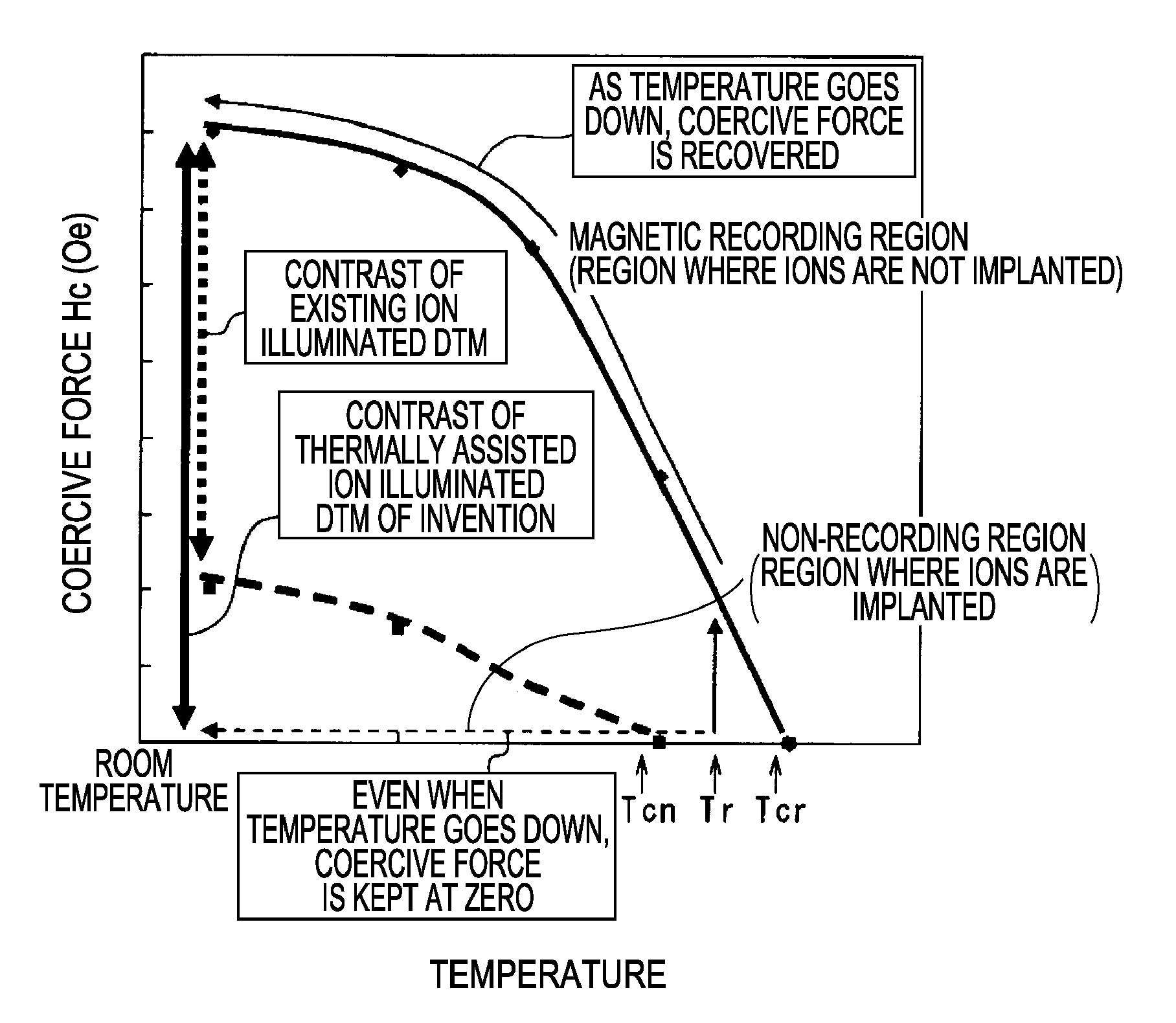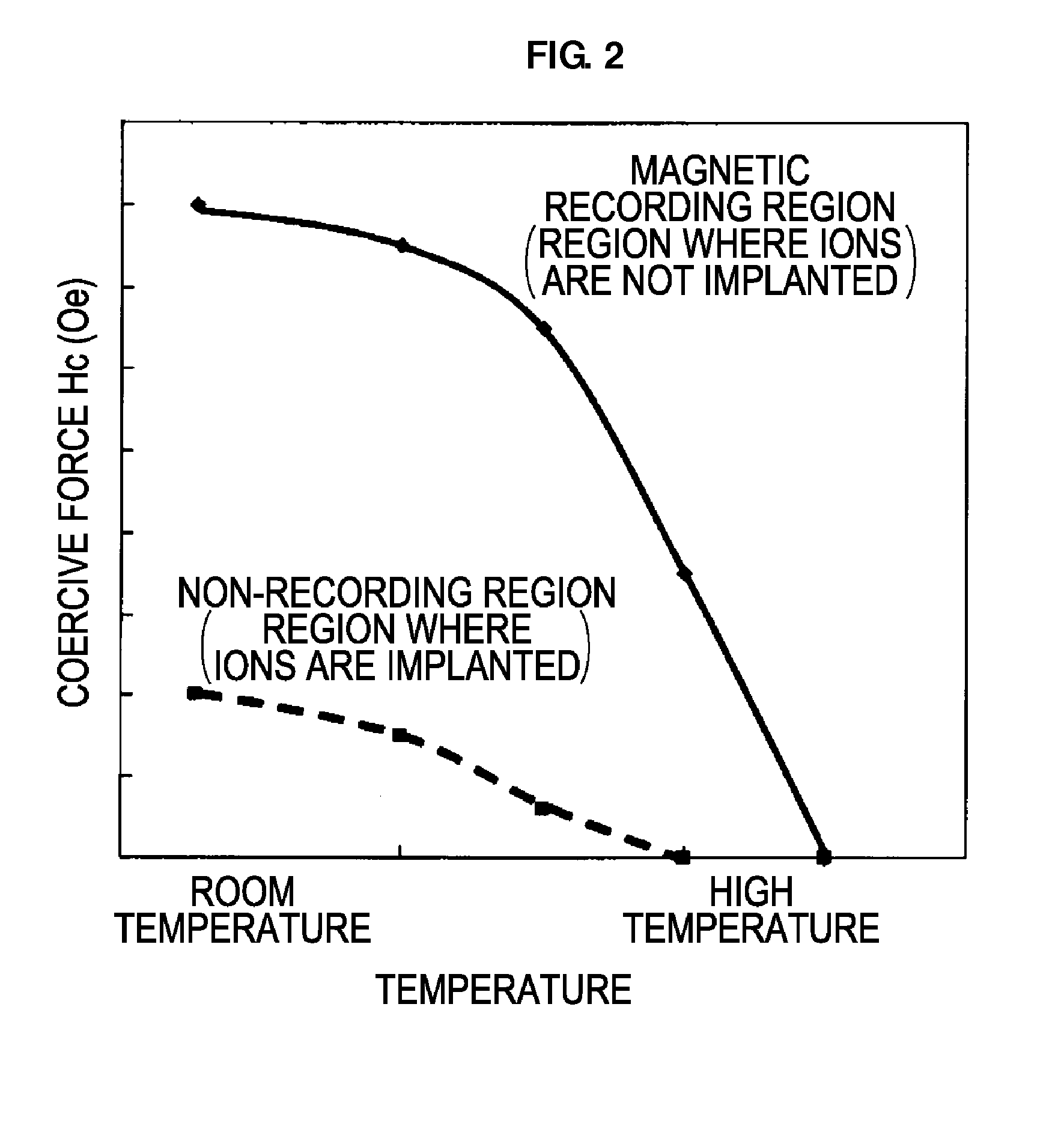Thermally assisted magnetic recording disk with ion-implant facilitated non-magnetic regions, manufacturing method thereof, and magnetic recording method
a technology of magnetic recording disk and ion-implant, which is applied in the field of magnetic recording disk, can solve the problems of limiting the recording magnetic field of the head, increasing the tpi, and restricting the cross-talk from occurring, so as to improve the accuracy of information reading and record high contrast.
- Summary
- Abstract
- Description
- Claims
- Application Information
AI Technical Summary
Benefits of technology
Problems solved by technology
Method used
Image
Examples
examples
[0081]A nonmagnetic and heat-resistant disk-like glass substrate having a diameter of 65 mm was prepared, and, on the glass substrate, 80Fe-8Ta-12C (100 nm) as a soft magnetic layer, then MgO (20 nm), Fe (1 nm) and Au (40 nm) as an intermediate layer were sputter deposited at room temperature.
[0082]Then, the substrate was heated to 300° C., followed by sputter-depositing FePt (15 nm) thereon, further followed by annealing at 500° C. to form an ordered alloy. It was confirmed with X-ray that FePt is formed into an ordered alloy. In FIG. 5A, layers upper than the FePt layer 4 are illustrated.
[0083]Furthermore, a carbon film (not shown in the drawing) made of diamond-like carbon was deposited at a thickness of 3 nm according to a CVD method, and thereon a room temperature nano-imprint resist (SOG) was coated to form the resist mask layer 6. A thickness of the resist mask layer was set to 80 nm (FIG. 5A).
[0084]The patterning was conducted according to a nano-imprint method, a pitch of a...
PUM
| Property | Measurement | Unit |
|---|---|---|
| temperature | aaaaa | aaaaa |
| coercive force | aaaaa | aaaaa |
| temperature | aaaaa | aaaaa |
Abstract
Description
Claims
Application Information
 Login to View More
Login to View More - R&D
- Intellectual Property
- Life Sciences
- Materials
- Tech Scout
- Unparalleled Data Quality
- Higher Quality Content
- 60% Fewer Hallucinations
Browse by: Latest US Patents, China's latest patents, Technical Efficacy Thesaurus, Application Domain, Technology Topic, Popular Technical Reports.
© 2025 PatSnap. All rights reserved.Legal|Privacy policy|Modern Slavery Act Transparency Statement|Sitemap|About US| Contact US: help@patsnap.com



